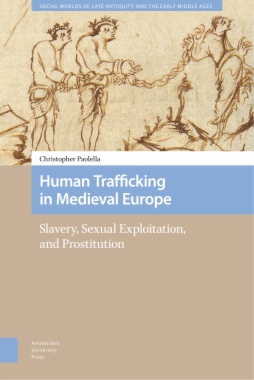Human trafficking has become a global concern over the last twenty years, but its violence has terrorized and traumatized its victims and survivors for millennia. This study examines the deep history of human trafficking from Late Antiquity to the Early Modern Period. It traces the evolution of trafficking patterns: the growth and decline of trafficking routes, the everchanging relationships between traffickers and authorities, and it examines the underlying causes that lead to vulnerability and thus to exploitation. As the reader will discover, the conditions that lead to human trafficking in the modern world, such as poverty, attitudes of entitlement, corruption, and violence, have a long and storied past. When we understand that past, we can better anticipate human trafficking’s future, and then we are better able to fight it.
- Cover
- List of Maps
- Map 0.1: Major Mediterranean Sea Currents
- Map 1.1: Insular Trafficking Patterns from the Fifth through the Seventh Century CE
- Map 1.2: Continental Western European Trafficking Patterns from the Fifth to the Seventh Century CE
- Map 1.3: Trafficking Routes in the Eighth Century
- Map 2.1: Italy–Aegean Trade Routes
- Map 2.2: The Southern Arc from the Ninth to the Twelfth Century CE
- Map 2.3: The Northern Arc from the Ninth to the Twelfth Century CE
- Map 3.1: The Southern Arc from the Twelfth to the Sixteenth Century CE
- Table of Contents
- Acknowledgements
- Introduction
- 1. Early Medieval Slave Trading
- 2. ‘Stuffing the Beaches’
- 3. Gendered Differences
- 4. The High Medieval Pivot
- 5. The Late Medieval Sex Trade
- Conclusion
- Bibliography
- Index

